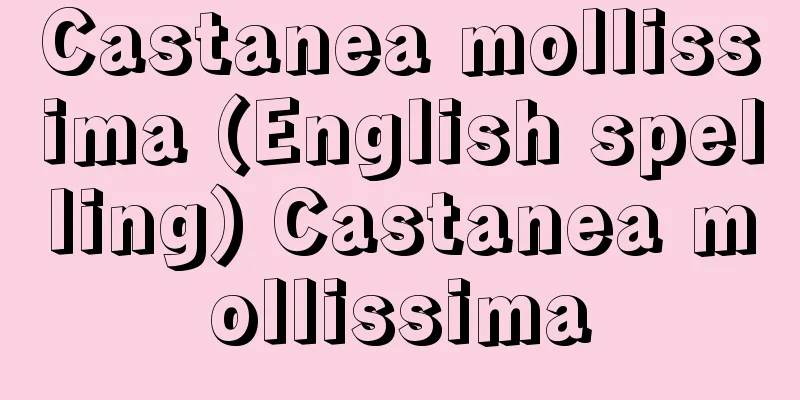Chipped stone tools

|
This refers to stone tools that have been created using the "breaking" method, one of the three techniques for stone processing, to create blades that are directly linked to their function as tools, and that have a shaped overall shape. Basically, a stone hammer (hard hammer) is used to directly break the material (direct impact method), but for fine-grained materials, a pressure peeling method (pressure peeling method) is used with softer materials than stone, such as wood or bone horn (soft hammer), resulting in an elegant finish. Indirect impact methods using a punch have also been devised. Rocks with sharp cracks, such as obsidian, shale, andesite, and quartz, are often used. More than 99% of stone tools from the Paleolithic period are chipped, and include pebble tools (single-edged tools are called choppers, double-edged ones are called chopping tools), hand axes, tool points, double-sided stone tools, piece esquiles, implanted blades, boat-shaped stone tools, knife-shaped stone tools, cutting stone tools, carving tools, awls, trapezoidal stone tools, and microliths. The Jomon period included chipped stone tools such as stone arrowheads, stone spears, stone harpoons, chipped stone axes, stone spoons, and stone awls, while the Yayoi period included chipped stone tools such as stone arrowheads, stone spears, stone awls, chipped stone knives, stone knives, irregular stone tools that are thought to have served mainly as wedges, and chipped stone hoes. [Aio Matsuzawa] [Reference] |Source: Shogakukan Encyclopedia Nipponica About Encyclopedia Nipponica Information | Legend |
|
石材加工の三つの技術の一つ「打ち割る」方法によって、道具として機能に直接結び付いた刃をつくりだし、また全体の形を整えた石器類をさす。基本的には石ハンマー(硬質ハンマー)を使って直接たたき割る方法(直接打撃法)をとるが、きめ細かな材質の場合には石より軟らかい木、骨角など(軟質ハンマー)を用いた押し剥(は)ぐ方法(押圧剥離(おうあつはくり)法)による仕上がりの優美な加工がある。また、間にパンチ(たがね)を挟んだ間接的な打撃方法も考案される。黒曜石、頁岩(けつがん)、安山岩、硅岩(けいがん)などの割れ口の鋭い岩石が多用される。旧石器時代の石器類の99%以上が打製であり、礫器(れっき)(片刃のものをチョッパー、両刃のものをチョッピングトゥールとよぶ)、握斧(あくふ)、尖頭器(せんとうき)、両面加工石器、ピエスエスキーユ、植刃、舟底形石器、ナイフ形石器、切出し形石器、彫器、錐(きり)、台形石器、細石器などがある。縄文時代には石鏃(せきぞく)、石槍(せきそう)、石銛(いしもり)、打製石斧(せきふ)、石匙(いしさじ)、石錐(せきすい)など、弥生(やよい)時代には石鏃、石槍、石錐、打製石包丁(いしぼうちょう)、石小刀、主として楔(くさび)の役割をしたとみられる不定形石器、打製石鍬(いしぐわ)などの打製石器類がある。 [松沢亜生] [参照項目] |出典 小学館 日本大百科全書(ニッポニカ)日本大百科全書(ニッポニカ)について 情報 | 凡例 |
Recommend
Bonito fishing
...It is estimated that approximately 1.3 million...
Puppet - Ayatsuriningyou
1. A puppet used in marionette plays. There are st...
Truck - Daisha (English spelling) truck
A structure equipped with running gear such as wh...
Spy (English spelling)
A village located in south-central Belgium, west o...
Asia Minor
A peninsula that constitutes the Asian territory ...
Nobuo Nakagawa
Film director. Born in Kyoto City. Graduated from ...
CET - Computer Engineering Testing
《 central European time 》⇒Central European Standar...
European Patent
A patent granted under the European Patent Convent...
Cozens, A.
…Father and son, British watercolorists. The fath...
Gronovius, J. (English spelling) GronoviusJ
…One of the leading Western classical scholars of...
Interference
In wireless communication, interference occurs whe...
Haguro [town] - Haguro
A former town in Higashitagawa County in the north...
RKO Films [Company] - RKO Radio Pictures Inc.
An American film company. In 1928, Radio Corporati...
Coastal defense - Coastal defense
…Formally called Coast Defense Officer, this was ...
Ismailia - Ismailia (English spelling)
A port city located at the midpoint of the Suez C...









